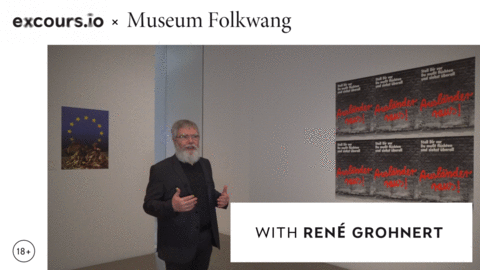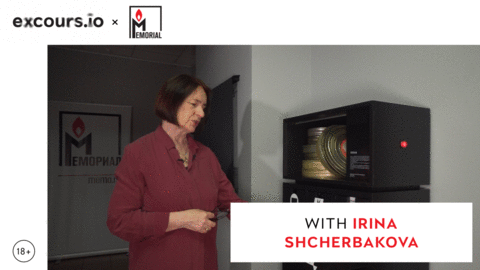Hyogo Prefectural Yokoo Emergency Hospital
The exhibition Hyogo Prefectural Yokoo Emergency Hospital explores the profound connection between artist Yokoo Tadanori’s body, his life, and his creative output. Spanning his journey from sensory childhood experiences to confronting old age, the exhibition highlights Yokoo’s unique philosophy of trusting physical sensation over mental states, even in the face of numerous illnesses and injuries such as asthma and facial palsy. The museum is transformed into a hospital setting, featuring works, diaries, and sketches by Yokoo, including his prophetic With Corona series of 2020 which addressed masks. Viewers are invited to reexamine their own relationship with the physical and consider how challenges, including those of a global pandemic, can inspire resilience and artistic force. This presentation underscores the body as a truthful guide for life and art.
Why should you watch this?
Hyogo Prefectural Yokoo Emergency Hospital reframes illness, aging, and crisis as sources of creativity rather than decline. In transforming a museum into a functioning hospital, the exhibition unsettles yet captivates by asking visitors to confront the fragility of the body — the same fragility Yokoo has long turned into art. His sketches made from a sickbed and the eerie humor of his With Corona collages capture the tension between vulnerability and resilience with startling clarity. The experience ultimately reminds us that the body, in all its imperfections, can guide not only personal survival but also shared imagination for the future.
Yokoo Tadanori’s Game of Life
Yokoo Tadanori’s Game of Life transforms the artist’s remarkable journey into an interactive board game, inviting visitors to experience his extensive artistic world firsthand. Born in 1936, Yokoo Tadanori has navigated a career spanning decades, marked by a philosophy that embraces destiny and chance. The exhibition explores how his art reflects life’s unpredictable path, where outcomes are often left to fate, much like reaching the “Finish” square in a game. Through this engaging format, featuring the visionary artist’s work, the exhibition encourages reflection on the interplay of choice and fortune in shaping creative expression and individual trajectories. Visitors will gain a fresh perspective on his unique artistic vision and the unpredictable nature of life itself.
Why should you watch this?
The film Yokoo Tadanori’s Game of Life feels urgent now because it frames existence as both play and chance, echoing the uncertainty of our own times. Yokoo’s use of the board game format highlights how life’s path is shaped as much by accident as by intention, a theme that resonates in an era of shifting global realities. Moving between moments of triumph, setback, and surprise, the exhibition transforms autobiography into a shared reflection on fate. The playful roll of the dice becomes a metaphor for resilience, leaving viewers with a reminder that unpredictability is not chaos but a condition of living.
Requiem: Cats, Portraits, and Yokoo Tadanori
Requiem: Cats, Portraits explores artist Yokoo Tadanori’s profound connections with departed friends, family, and beloved cats, tracing his influential career from the 1960s to the present. Born in 1936, Yokoo’s artistic journey has always been shaped by deep personal relationships and collaborative endeavors across various creative fields. The exhibition features portraits and personal statements, alongside items like the Tama, Come Home series, dedicated to his late cat. Visitors will also see examples of his enduring friendship with designer Issey Miyake, including iconic invitation designs from the 1970s onwards. This unique presentation invites viewers to reflect on how cherished relationships transcend time, influencing an artist’s vision and offering a glimpse into a timeless “Yokoo World.”
Why should you watch this?
The film Requiem: Cats, Portraits speaks to the need to keep memories alive in a time when loss touches many lives. Yokoo Tadanori’s portraits of friends, family, and his late cat Tama are not only records of affection but also reminders of how relationships shape creative vision. The display of Issey Miyake’s invitations alongside Yokoo’s drawings captures the energy of a friendship that spanned decades, showing how personal ties can fuel artistic innovation. Moving between private recollection and shared cultural history, the work invites viewers to consider how love, grief, and memory continue to shape the world we inhabit.
Yokoo Tadanori: 100 Takes of Hanshan and Shide
100 Takes of Hanshan and Shide presents artist Yokoo Tadanori’s series of 102 paintings, reinterpreting figures from China’s Tang dynasty. Hanshan and Shide, eccentric poets believed to be bodhisattvas, have inspired artists for centuries with their enduring mystery. Yokoo found them an ideal image, projecting them onto diverse scenes like ukiyo-e-style women and marathon runners, a quest begun with his interpretation of Soga Shohaku. This exhibition reveals Yokoo’s sustained creative power after forty years, connecting ancient legends with contemporary art. Visitors will reflect on the timeless interplay between myth and artistic vision, appreciating how one artist continually reshapes enduring narratives.
Why should you watch this?
The film 100 Takes of Hanshan and Shide speaks to our moment by showing how myth and misrule become tools for thinking about continuity and change. Yokoo’s decision to paint 102 versions — placing ragged, poetic figures beside ukiyo-e women, Belorussian lovers, and marathon runners — stretches time and tests who belongs in stories we keep. Some images shock: Hanshan laughing in garish color or Shide pacing through a crowd of runners; others disarm with tenderness. The work feels at once playful and provocative, inviting viewers to reconsider tradition as a living practice and to carry forward compassion and imagination into uncertain futures.
Yokoo in Wonderland
Yokoo in Wonderland invites visitors into artist Yokoo Tadanori’s parallel realm, where the boundaries of reality dissolve into a collection of wonders. Drawing inspiration from Lewis Carroll’s classic Alice in Wonderland, the exhibition guides viewers through a journey that begins with a girl falling into an underground kingdom, then continues into space and an unknown world. The experience progresses through “The Looking-Glass World,” where real and virtual images intertwine, and concludes in “The Land of Dreams,” blurring reality and unreality. Through Yokoo’s distinctive artistic vision, this exhibition encourages a deep immersion into an infinitely expanding universe, prompting reflection on how art can transport and reshape our perception of the world.
Why should you watch this?
110 Years, 110 Works. Société Générale Collection
110 ans, 110 œuvres, at the Mohammed VI Museum of Modern and Contemporary Art in Rabat, commemorates Société Générale Maroc’s 110th anniversary and its long-standing commitment to art and Moroccan culture. This exceptional exhibition, a collaboration with the National Museum Foundation, features a precious part of the bank’s collection, including previously unseen works. It takes visitors on a timeless journey, tracing Moroccan art’s evolution from the early 20th century, starting with pioneers like Ben Ali R’bati, across four distinct periods to the present day. The exhibition highlights Moroccan artists’ contribution to national identity. It celebrates a rich artistic heritage and Société Générale Maroc’s enduring role in art’s promotion, anticipating the opening of its own museum in 2024. Visitors gain insight into Morocco’s artistic dynamism and the intricate relationship between banking and cultural patronage over more than a century.
Why should you watch this?
The exhibition 110 ans, 110 œuvres matters today because it shows how art can carry a nation’s memory while speaking to its future. Moving between the early brushstrokes of Ben Ali R’bati and the global perspectives of contemporary Moroccan artists, it evokes both pride and questioning: how does creativity define who we are in a world of constant change? Visitors may feel inspired by the intimate voices of the 1980s generation, who turned personal experience into universal expression, or by today’s works shaped through worldwide dialogue. Ultimately, the exhibition reminds us that art’s power to connect time, place, and people remains urgently relevant.
Hanbok, Poetics of Line and the Passage of Life
The exhibition Hanbok, Poetics of Line and the Passage of Life presents the story of traditional Korean attire, tracing its cultural significance and transformation through time. With a basic style originating in the Three Kingdoms period (37 BCE – 668 CE), the Hanbok shown primarily reflects that of the Joseon dynasty (1392 – 1910). The exhibition explores how this clothing embodies Korean ancestral values, worldview, and reverence for nature through its use in life’s milestone ceremonies and its symbolic colours derived from Yin-Yang theory. Curated by EuiJung McGillis, the presentation showcases items from a baby’s first birthday dress to royal robes, alongside modern reinterpretations by early twentieth-century shinyeoseong (new women). Visitors will discover Hanbok as a transmitter of tradition and a dynamic symbol of Korean identity in a global context.
Why should you watch this?
Hanbok, Poetics of Line and the Passage of Life resonates today because it frames clothing as both a vessel of memory and a mirror of change. The exhibition’s display of the Obangjang durumagi, alive with five elemental colors, reminds us of humanity’s search for balance with nature at a time when sustainability is a global concern. Equally striking are the “new women” who reshaped Hanbok to claim individuality during Korea’s modernization — a gesture that still feels bold and liberating. This exhibition shows that tradition is not fixed but evolving, offering viewers a timeless reflection on identity, resilience, and creativity.
Klaus Staeck. Sand for the Gears
Why should you watch this?
Klaus Staeck’s exhibition resonates deeply with contemporary audiences, serving as a powerful reminder of art’s capacity to provoke thought and inspire social change. In an age marked by political polarization and social unrest, Staeck’s nearly 180 posters challenge us to confront uncomfortable truths and reflect on the role of dissent in shaping public discourse. His bold, often scandalous imagery speaks to the importance of artists as catalysts for conversation, urging society to engage with pressing issues such as inequality, identity, and civic responsibility. As we navigate our own crises today, Staeck’s work underscores the timeless relevance of art as a tool for advocacy and a vehicle for sparking new dialogues. This exhibition not only honors a pivotal figure in art history but also invites us to consider how we, too, can use creativity to effect change in our communities.
“A” fell down, “B” is gone. Glossary of Soviet censorship. Censorship practices in the USSR from the first to the last day of the Soviet authorities
The exhibition serves as a poignant exploration of the pervasive and often absurd censorship that defined Soviet culture over 70 years. By navigating through the Russian alphabet—from the arrest of manuscripts to the Yauza tape recorder and the underground phenomenon of magnitizdat—visitors will uncover a narrative rich in both cruelty and resilience. Each letter unveils stories of meticulous scrutiny and cold repression, highlighting the complex interplay between censorship and state security, while also showcasing remarkable acts of civil defiance against artistic oppression. Enhanced by an array of documents, media, and artifacts, this exhibition invites you to explore the hidden layers of Soviet history and the power of creative expression that endeavored to resist the “red pencils” of authority.
Why should you watch this?
Being familiar with censorship practices is crucial in today’s increasingly polarized society, where issues of free speech and artistic expression are under threat globally. In an era marked by social media scrutiny, fake news, and governmental overreach, understanding the historical context of censorship serves as a stark reminder of the fragility of our rights and liberties. This exhibition resonates with contemporary struggles against misinformation, the suppression of dissent, and the erosion of trust in media and government institutions. By delving into the past, viewers gain insights into the tactics used to stifle voices and the importance of civil resistance. Thus, this tour becomes not just a historical observation, but a call to action, encouraging us to safeguard freedom of expression and advocate for a culture where diverse narratives can flourish without fear of repercussion in our modern landscape.









